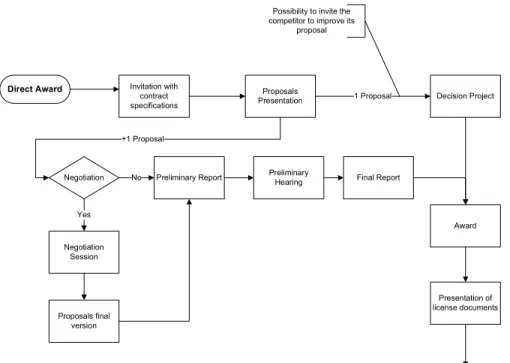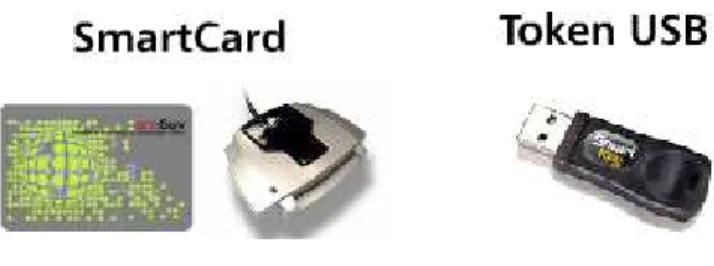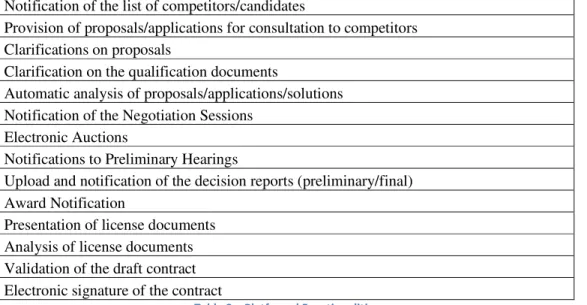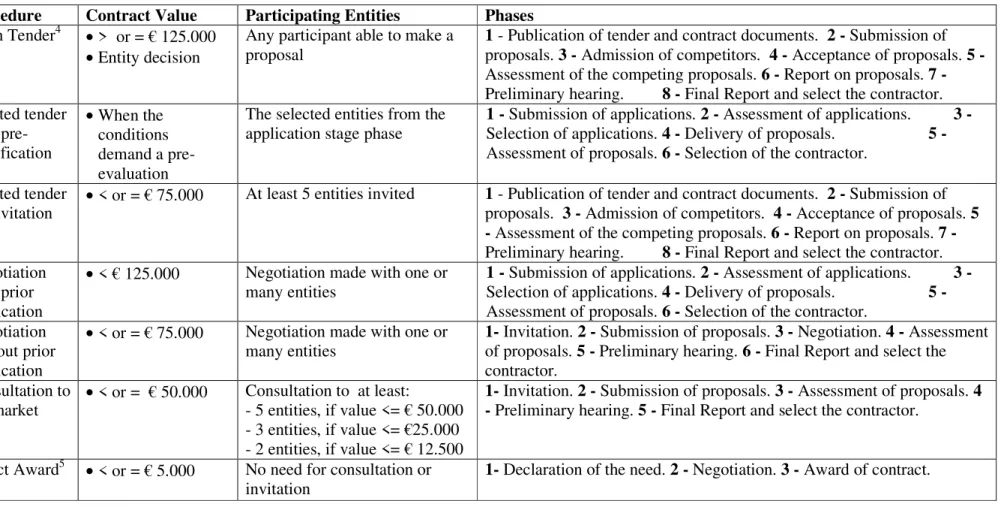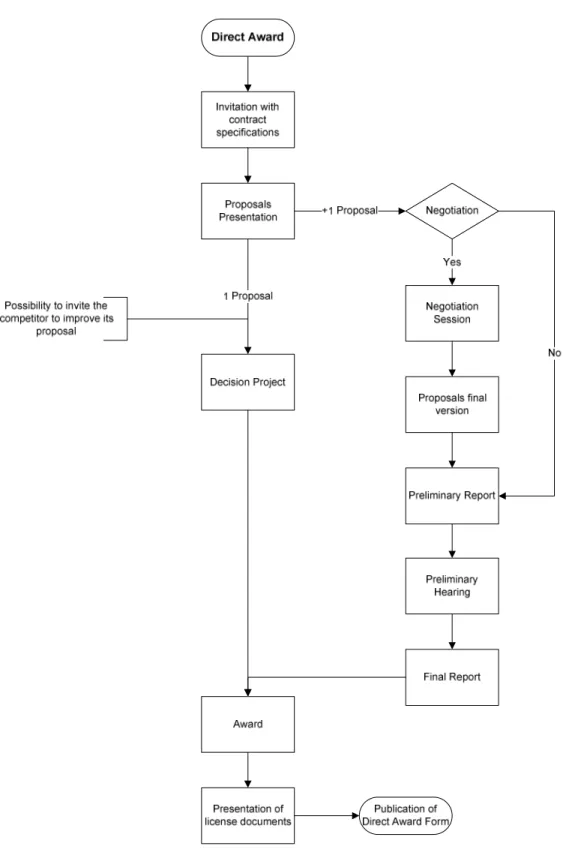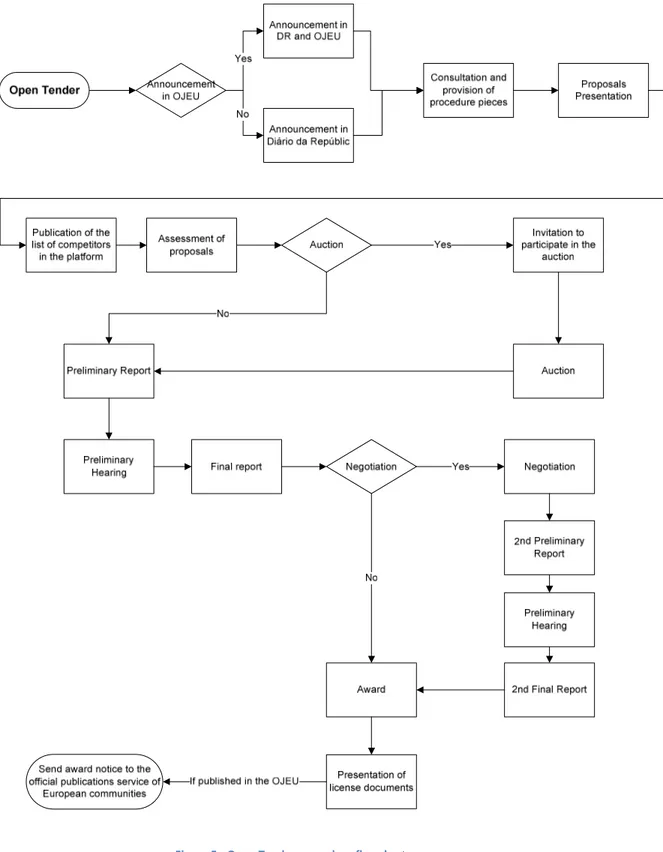A Work Project presented as part of the requirements for the Award of a Masters Degree in Management from the Faculdade de Economia da Universidade Nova de
Lisboa
Evolution in public procurement and the
impact of e-procurement platforms: a case
study
Pedro Manuel Mariano Leal No. 400
A Project carried out on the strategy area, with the supervision of: Prof. Amílcar Arantes
2
Evolution in public procurement and the impact of
e-procurement platforms: a case study
Acknowledgements:
There are a few people that I want to thank. First, I would like to thank the advice, availability and help of my advisor, Professor Amílcar Arantes. I would also like to thank the availability and cooperation of Dr. Sara Fernandes and Dr. Pedro Lima from the Centro Hospitalar Lisboa Norte (CHLN). Finally, I would like to thank my family and friends for their words of encouragement and support.
Abstract:
The aim of this project is to understand the evolution that occurred in the public procurement due to the new Public Contracts Code that changed the procurement procedures and forced public entities to use electronic procurement platforms. This work is a contribution to the understanding of the main procurement changes with this new code as well to understand the impact and functioning of electronic procurement platforms. Moreover, a case study is presented, using the Centro Hospitalar Lisboa Norte, to assess the impacts of these changes and the inevitable adjustments needed.
3 List of acronyms
B2B – Business-to-Business
BSC – Balance Scorecard
CA – Contracting Authority
CEGER – Centro de Gestão da Rede Informática do Governo CHLN – Centro Hospitalar Lisboa Norte
CPV – Common Procurement Vocabulary
CSF – Critical Success Factors
DR – Diário da República
EC – European Commission
EPE – Entidade Pública Empresarial
EU – European Union
GDP – Gross Domestic Product
HPV – Hospital Pulido Valente
HSM – Hospital Santa Maria
ICT – Information and Communication Technologies
KPI – Key Performance Indicator
OJEU – Official Journal of European Union
PCC – Public Contracts Code
QDC – Qualified Digital Certificate
SA – Sociedade Anónima
RFI – Request for Information
RFP – Request for Proposal
4 1. Purpose of the project
The purpose of this work project is to understand the evolution of the procurement in the public sector. This work is particularly relevant as, in the beginning of 2008, the Decree-Law 18/2008 approved the new Public Contracts Code (PCC), which rules the public procurement. This new piece of law introduced deep changes in the way public procurement is done, being the most significant, the mandatory use of electronic platforms to conduct public procurement.
The study of the evolution of public procurement is an important topic because it affects all public institutions such as Central Government, municipalities, public institutes, public business entities and all the institutions financed by the public purse. Public procurement concerns the society as it is financed by the money of all taxpayers. Moreover, in times when it is imperative reducing public spending to balance public accounts, study public procurement is important because it has a big impact in public expenditure. In addition, these changes, namely the mandatory use of e-procurement platforms, affect many private companies that supply public entities.
5 Moreover, this project gives a perspective of the impacts of the new procurement code in a public institution. Centro Hospitalar Lisboa Norte (CHLN) is used, as a case study, to assess the impacts of the introduction of the new PCC. CHLN is a hospital center, where the procurement activity is very complex as a diversity of goods and services are procured. Furthermore, hospitals are an important part in public health expenditure and, in 2006, the public health expenditure weighted 7,4% of the GDP (OECD, 2009). The research questions of this work are “How the public procurement has evolved in the recent years?”, “What are e-procurement platforms and how they work?” and “How these changes impact public entities?”
The objectives are:
1. Understand the main changes in the public procurement law;
2. Understand how e-procurement platforms are organized and their basic functionalities;
3. And assess the impacts of the new procurement code and type of efforts and adjustments needed to be made by public entities.
6 2. Literature Review
This part will clarify some concepts that are helpful for the comprehension of this work. The first important concept is procurement. Procurement refers to all activities inside an organization associated with the acquisition of goods and services like: identification of needs, supplier selection, negotiation, requisition, approval, order, receipt, invoice and payment, inventory, among others. (Amaral, Teixeira and Oliveira, 2003)
The use of electronic means to pursue the procurement activity led to the concept of e-procurement or electronic e-procurement. Min and Galle (2003) defined e-e-procurement as “B2B purchasing practice that utilizes electronic commerce to identify potential sources of supply, to purchase goods and services, to transfer payment, and to interact with suppliers”. Furthermore, Vaidya (2009) described public e-procurement as the use of Internet and Information Systems to “automate and integrate any part of procurement process in order to improve the efficiency and quality in public procurement, and to promote transparency and accountability in the wider public sector”.
7 In the last years, e-procurement gained importance in the literature as several studies showed its benefits (Croom, 2000; Pike, 2001; Roche, 2001; De Boer et al., 2002; Moon, 2005; Angappa and Ngai, 2008). Hawking, Stein, Wyld and Foster (2004) refer as e-procurement benefits: price reductions, improved process efficiency, reduction of maverick (off contract) buying, order fulfillment time shortened, reduction of inventory levels, reduction of inventory costs, reduction of administrative costs, better monitoring and streamline inefficient processes. The Aberdeen Group report (2001) quantified these benefits, presenting the following results: reduction in the prices by 5% to 10%; shorter requisition-to-fulfillment cycles by 70% to 80%; lower administrative costs by 73%; maverick buying reduced by 50%; and reduction in inventory costs by 25% to 50%, on average.
The barriers and challenges to implement e-procurement come from security, confidentiality, integration of the system or end-user behavior issues (Hawking et al., 2004). Angeles and Nath (2007) refer as challenges: the lack of system integration and standardization; the immaturity of e-procurement-based market services; end-user resistance; maverick buying; and difficulty in integrating e-commerce with other systems. Yen and Ng (2002) study showed some concerns on e-procurement. On one hand, concerns related to the costs and time of development the system and the return on investment. On the other hand, the need of having the adequate workforce and workers’ apprehensions about being replaced by automated systems.
8 getting more value. In the Portuguese research field on public procurement, it is important to refer the work of Mateus, Ferreira and Carreira (forthcoming) about evaluation models for public tenders.
3. Legislation
In this part of the work, the evolution of the laws and codes of public procurement is described with particular attention to procurement procedures.
As said before, the legislative initiative altered the way the public procurement is pursued. This initiative started, in 2000, when the European Council develop the Lisbon Strategy, the action plan and strategy for Europe that, among other things, predicted the accelerate use of e-commerce. The intent was to standardize the different procurement laws of the member states and ensure juridical security to economic operators by setting the rules for a truly international public procurement.
The most important pieces of EU law on public procurement are: Regulation No. 2002/2195, on Common Procurement Vocabulary (CPV); and Directives 2004/17/EC and 2004/18/EC, both on public procurement procedures. In Portugal, the transposition of these laws happened in 2008. The Decree-Law No. 18/2008 transposed the Directives 2004/17/EC and 2004/18/EC, approving the new Public Contracts Code (PCC). PCC is the code that establishes the rules applicable to public procurement, defining all the processes needed from the decision of contracting to the execution of the contract. The new PCC was very important because it not only introduced procedural changes but also forced the contracting through the use of e-procurement platforms.
9 open or limited tender with announcement, limited tender without announcement, negotiation and direct award. The Decree-Law No. 179/99 was more complex and admitted more possibilities, being seven the number of procedures available: open tender, limited tender with pre-qualification, limited tender by invitation, consultation to the market, negotiation with prior publication, negotiation without prior publication and direct award. The decision to choose the procedure would depend mainly on the value of the contract and would impose certain conditions. See appendixes 1 and 2.
The new PCC brought radical changes, the legal regime started to be concentrated in a single Decree-Law, there was a procedural simplification with the reduction and standardization of the procedures, but more important, the procurement was dematerialized through the use of procurement platforms. With the new PCC, e-procurement platforms are present in all the phases, from the publication of the tender and contract documents to the publication of the decision of awarding.
10 procedures made under the new code. The objective of the new PCC was to introduce more efficiency, transparency, simplicity, innovation and monitoring (Portugal, 2008). The five base procedures are: direct award, open tender, limited tender with pre-qualification, competitive dialogue and negotiation procedure. The direct award is the procedure where the CA has more control over the competitors since they are invited by the public entity. However, this procedure can be choose under certain conditions, the most important one is being under certain limit values but there are exceptions like when there is only one supplier able to supply a product, the direct award can also be applied. The limit values to choose this procedure are present in the Table 1.
The direct award procedure consists in inviting suppliers, assessing their proposals, negotiating and awarding the contract. (See Figure 1 or Appendix 3)
Direct Award
Contracting Authority Type of contract Value of the contract (Max.)
Public Administrative Sector
Goods and Services €75.000
Works €150.000
Public Business Sector Goods and Service €206.000
Works €1.000.000
Table 1 – Direct Award Limit values
!
! " #
" !
11 The open and limited tender procedures (see appendixes 4 and 5) are necessarily used when the direct award cannot be choose or by decision of the CA. In these tenders, the suppliers make an application and submit a proposal. The CA then assesses the proposals and may use e-action or a negotiation phases before deciding and awarding the contract. In the limited tender, there is a pre-qualification stage as contracts are more demanding and require skilled suppliers. Both procedures must be published in the official newspaper of the Portuguese Republic, Diário da República (DR). In case they exceed the values of Table 2, they also needed to be published in the Official Journal of the European Union (OJEU).
The competitive dialogue is used in extremely complex contracts for technical or other reasons that require the dialogue with the potential candidates to elaborate the contract specifications. The negotiation procedure is used in specific situations related to difficulties in reaching the base value of the contract. For example, when the CA does not know the base value to put in the contract specifications, it needs to negotiate with the competitors that value. These two last procedures are less used.
Despite the reduction of the number of procedures, the procedures somehow became more complex as some of them have two extra phases that are optional, e-auction and negotiation phase. Notwithstanding, e-procurement platforms promise to streamline these phases and the whole process of the procedures.
The deadline for the use of e-procurement platforms was 30 July 2008 but due to delays in the implementation it was postponed until 31 October 2009.
Open and Limited tender without announcement in OJEU
Contracting Authority (CA) Type of contract Value of the contract (Max.)
Public Administrative Sector Goods and Services €133.000
Works €5.150.000
Public Business Sector Goods and Service €206.000
Works €5.150.000
12 4. E-procurement platforms
The subject in focus in this part is e-procurement platforms. A discussion around the advantages, functioning and costs of platforms is presented.
As pointed before, one of the major changes in public procurement was the mandatory use of e-procurement platforms. E-procurement platforms are platforms operated and managed by a third-party. Platforms as other e-procurement systems promise several benefits like price reductions, shorter procurement cycle times, increase of efficiency and productivity, reduced administrative costs, less paperwork, increase of monitoring and of transparency.
13 learn how to work with the platform for the different procedures. For the Portuguese Government, the goals of innovation and transparency are still delivered because platforms, as neutral entities, are the best guarantee that transparency is present in the procurement process.
All the platforms chosen by public entities must be certificated by a public technology auditor, CEGER – Centro de Gestão da Rede Informática do Governo (Center for the Management of Government Computer Network), that assures that the platform is in accordance
with the law and respects the technology requirements requested.
The certificated e-procurement platforms, at the date of this work project, are: acinGov, anoGov, Forumb2b, Construlink, ComprasPT, Tradeforum, BizGov and VortalGov.
14 Figure 2 – Digital Qualified Certificates Technologies
Timestamps consists is the process of associating a time and hour to an electronic action. For example, when a competitor submits a proposal, the proposal must have a timestamp informing when the action was taken. The timestamps are sold in packages that cost around €1 per timestamp. Besides these costs, suppliers don’t have more costs, unless they purchase solutions provided by the platforms like training sessions.
Platforms play an important role in the procurement process as they improve and streamline the communication between buyer and supplier and make easier the consultation of any information. An example is when the public entity needs to send some information about the procedure to competitors and, with platforms, that can be made through a single action with little effort. Furthermore, at any time the competitor can consult the documents of the procedure or ask for a clarification via the platform. Platforms are present in all the phases of procurement. A list of platform functionalities is presented in Table 3. These functionalities address the different phases of the procurement procedures.
Platform Functionalities Sending of invitations
Publication of the procedures and procedure pieces Download of procedure pieces
Management of access to procedure Access control to pieces of the procedure Clarifications on pieces of the procedure
Electronic submission of proposals, applications and solutions Upload of the proposals and applications sent by competitors Submission of Errors and Omissions
Correction of pieces of the procedure
15 Notification of the list of competitors/candidates
Provision of proposals/applications for consultation to competitors Clarifications on proposals
Clarification on the qualification documents
Automatic analysis of proposals/applications/solutions Notification of the Negotiation Sessions
Electronic Auctions
Notifications to Preliminary Hearings
Upload and notification of the decision reports (preliminary/final) Award Notification
Presentation of license documents Analysis of license documents Validation of the draft contract Electronic signature of the contract
Table 3 – Platforms’ Functionalities
Besides these functions, platforms offer other type of services like sourcing strategies, contract management, electronic invoice, business report or change management.
5. E-procurement at CHLN
This part of the project is intended to assess the impacts of the new procurement code in a public entity. For this purpose, the Centro Hospitalar Lisboa Norte (CHLN), an important hospital center, was chosen and some interviews were conducted with the director of CHLN’s procurement department. The aim of these interviews was understand the organization and procurement strategy of CHLN.
16 normal functioning of the hospital. On the other hand, if it is a commodity or a service that is not critical, the strategy is to have only one supplier to take advantage of quantity discounts and get a better price. The criteria for selecting the supplier takes into consideration factors like price but also quality of the goods and services and medical indications. Indeed, quality and medical indication are determinant to choose one supplier over another.
In the end of last year, CHLN purchased the services of the e-procurement platform BizGov that started to be used in the beginning of this year. Moreover, CHLN adopted a new strategy in accordance to the new framework of procedures.
As discussed before, procurement procedures changed from seven to five procedures. In reality, this number is reduced to three as two of the five procedures are used in very specific situations. The three procedures are: the direct award, the open tender and the limited tender. The three procedures allow a negotiation stage, which is highly recommended whenever possible and whenever the responsible believes it can be beneficial. The open and limited tenders also allow e-auctions but this topic is further discussed.
17 The open and limited tenders are used when the contract value exceeds the direct award limit. In addition, tenders are used in contracts below the direct award limit where the type of good or service is not critical (or considered as commodity) and the number of suppliers is high. This because, the use of open and limited tender can push down contract prices as a higher number of proposals is expected and, therefore, there is more competition between the suppliers, ultimately resulting in a better price or better conditions. Examples of such products are printer cartridges, reams of paper, security, gardening or cleaning services that are not critical to the hospital and where price extractions can be better accomplished. Moreover, the open and limited tenders have the possibility of e-auction that can be used in these non-strategically products. Furthermore, there is not the risk of the final price resultant from the e-auction being higher than in a sealed-bid situation because the e-auction happens after a first proposal. The use of e-auction is, however, controversial as some authors state that it harms buyer-supplier relation as “suppliers might become less cooperative because they view this e-procurement application as a means for the buyer to extract price reductions” (Pearcy and Giunipero, 2008). On the other hand, many authors argue that it drives down the prices, introduces large savings and reduces procurement cycle time (Marinello and Daher, 2001; Smart and Harrison, 2003).
addressing the situations prev that are supplied by many com prices. Finally, the use of open considerations of the contrac phase. Figure 3 summarizes th
Fig
5.1 Impact of e-procurement
The use of e-procurement plat levels: organizational, cultural, At the organizational level, ch responsibilities. Some function procedure using faxes, once become less frequent like th procedures; and some types communicating with suppliers adapt to these new functions an
reviously described of some products, like reams companies and where the use of tenders may ass pen or limited tender depends on the type of contr
cting authority to the need of using a pre-qu the strategy.
Figure 3 – Procedure decision flowchart
nt platforms:
latforms has impacts in the CHLN’s procurement ral, technological and financial.
changes occur in the functions, processes, type of tions and processes disappear such as sending pie they are made available in the platform; other the use of telephone and fax to clarify dou
s of processes appear like managing the proce ers through the platform. Moreover, the employe s and responsibilities.
18 s of paper, assure better ntract and on qualification
ent at several
19 At cultural level, the use of the platform that will be part of the everyday work might affect the behavior and attitudes of employees because they might be afraid of losing their jobs or become less important to the organization.
At technological level, the use of platforms enhances the use of Information and Communication Technologies (ICT’s) and develops the technological competences as a great part of the daily work will be done using the platform.
At financial level, the implementation of e-procurement platforms has a high initial investment but leads to costs savings. The administrative costs for paper, printer cartridges and communications decrease, because the use of paper becomes less frequent and the communication with suppliers is done through the platform. In addition, the prices of goods and services may decrease with the use of e-auction.
5.2 Some insights on implementing e-procurement:
20 quality; productivity of resources, both human resources and information systems; budget accuracy, the deviations of the actual purchasing compared with the budget; and costs, not only the cost of purchased goods but also other cost of categories.
6. Conclusion
This work project is an important contribution to the understanding of the evolution of public procurement in Portugal. For this evolution, the introduction of the new law of procurement was crucial and had a huge impact since it introduced significant changes. This paper gives a general overview of the changes in the law with a special focus in e-procurement platforms. Moreover, this work gives a perspective on how these changes can affect public institutions, being useful the case studied.
Regarding the law changes, the reorganization and simplification of the procedures with the reduction to only five procedures, associated with the increase of the limit value to opt for the direct award procedure, brought more autonomy and power to public entities. On the other hand, the simplification of two procedures, simplified direct award and urgent open tender, brought greater agility and response in urgent situations. The introduction of e-procurement platforms, the use of e-auction and the creation of the internet portal were innovative aspects that not only brought more transparency and monitoring but also more efficiency. In fact, the introduction of e-procurement platforms revolutionized public procurement because it allowed the dematerialization of processes and altered the way communication was done with suppliers.
21 lasting savings. For suppliers, the use of e-procurement platforms is also an innovative aspect that will have minimal costs, related to technology issues.
The analysis of the CHLN’s case was important because it allowed understanding that the major difficulties will occur in the integration of the e-procurement platform rather than the adaptation to the new framework of procedures. Whereas the new framework of procedures led to a new strategy of procurement, the use of e-procurement platforms has impacts at many levels, especially, organizational and financial.
Finally, the implementation of e-procurement systems poses several difficulties. To overcome these difficulties, it is important to undertake reorganizations of functions and processes, train people, implement change management programs and transmit clearly the objectives and monitor closely the whole process. These recommendations are also applicable to other public institutions, namely public hospitals.
Limitations:
This work project has some limitations. This study lacks a quantitative analysis being more focused on the qualitative aspects. Furthermore, the arguments used to assess the impact of e-procurement platforms were based on the literature rather than testimonials from those working in the field. This because, the short time since the implementation of e-procurement platforms makes it difficult to assess the impacts.
Further Research:
22 be interesting. Likewise, this type of study can be conducted using the supplier side perspective. For example, study the economical gains and losses of using e-procurement platforms. Another interesting project is a study about the main difficulties and barriers in the implementation and use of e-procurement platforms.
7. References
Aberdeen Group. 2001. “Wanted: Rapid Deployment and ROI for e-Procurement.” http://www.deloitte.com/dtt/cda/doc/content/aberdeenrdp1.pdf (Accessed 7th February, 2010)
Amaral, Luís A., Cláudia Teixeira, and João N. Oliveira. 2003. “e-Procurement:
Uma reflexão sobre a situação actual em Portugal”.
http://www2.dsi.uminho.pt/gavea/downloads/e-Procurement.pdf
Angappa, Gunasekaran, and Eric W. T. Ngai. 2008. “Adoption of e-procurement in Hong Kong: An empirical research”. International Journal of Production Economics, 113(1): 159–175.
Angeles, Rebbeca, and Ravi Nath. 2007. “Business-to-business e-procurement: success factors and challenges to implementation”. Supply Chain Management: An International Journal, 12(2): 104–115.
Carayannis, Elias G., and Denisa Popescu. 2005. “Profiling a methodology for economic growth and convergence: Learning from the EU e-procurement experience for central and eastern European countries”. Technovation, 25(1): 1–14.
Croom, Simon, and Alistair Brandon-Jones. 2005. “Key issues in e-procurement: procurement implementation and operation in the public sector”. Journal of Public Procurement, 5: 367-87.
Croom, Simon R. 2000. ”The impact of web-based procurement on the management of operating resources supply”. Journal of Supply Chain Management, 1: 10–25.
De Boer, Luitzen, Jeroen Harink, and Govert Heijboer. 2002. “A conceptual model for assessing the impact of electronic procurement”. European Journal of Purchasing and Supply Management, 8(1): 25-33.
Hawking, Paul, Andrew Stein, David C. Wyld, and Susan Foster. 2004. “E-procurement: Is the ugly duckling actually a swan down under?” Asia Pacific Journal of Marketing and Logistics, 16 (1): 3–25.
23 Marinello, Michele, and Michael Daher. 2001. “Reversal of fortune: Turning the tables with a reverse auction could hammer down procurement costs”. Line56, (July/August 2001): 73-74.
Mateus, Ricardo, J. A. Ferreira, and João Carreira. Forthcoming. “Full disclosure of tender evaluation models: Background and application in Portuguese public procurement”. Journal of Purchasing and Supply Management.
Min, Hokey, and William P. Galle. 2003. “E-purchasing: profiles of adopters and non-adopters”. Industrial Marketing Management, 32(3): 227-33.
Moon, M. Jae. 2005. “E-procurement management in state governments: Diffusion of e-procurement practices and its determinants”. Journal of Public Procurement, 5(1): 54–72.
OECD. 2009. “OECD Health Data 2009: Overview”.
http://www.ecosante.org/index2.php?base=OCDE&langh=ENG&langs=ENG
(Accessed 5th May, 2010)
Panayiotou, Nikolaos A.,Sotiris P. Gayaialis, and Ilias P. Tatsiopoulos. 2004. “An e-procurement system for governmental purchasing”. International Journal of Production Economics, 90: 79–102.
Pearcy, Dawn H., and Larry C. Giunipero. 2008. “Using e-procurement applications to achieve integration: what role does firm size play?” Supply Chain Management: An International Journal, 13(1): 26-34.
Pike, Troy. 2001. “Retail “e-procurement” 2002: Minimizing cost and improving productivity”. http://www.forumpa.it/archivio/1000/1100/1180/1181/Documento1.pdf
(Accessed 5th February, 2010)
Portugal. 2008. Decreto-lei no.18/2008 de 29 de Janeiro que aprova o código dos contratos públicos. Diário da República, lª Série, 20, 29.01.2008, pp. 753–852.
Serra, Gonçalo. 2003. “E-Procurement: As soluções da Galp Energia”. Gestão Pura, 36 - 43.
Smart, Alan, and Alan Harrison. 2003. “Online reverse auctions and their role in buyer-seller relationships”. Journal of Purchasing and Supply Management, 9: 257-68.
Vaidya, Kishor. 2009. Electronic Procurement: Impact on Procurement Performance. Köln: LAP Lambert Academic Publishing.
Vaidya, Kishor, A.S.M Sajeev, and Guy Callender. 2006. “Critical Factors That Influence E-Procurement Implementation Success in the Public Sector”. Journal of Public Procurement, 6(1&3): 70-99.
Yen, Benjamin, and Elsie O.S Ng. 2002. “Migrating procurement onto the internet”,
24 8. Appendixes
Appendix 1 – Procurement procedures to public works, Old PCC
1
If the procedure is a limited tender a minimum of 5 entities and a maximum of 20 entities must be invited. 2
The open or limited tender must be published in the 3rd series of DR, in the OJEU, in one national and in one regional newspaper. 3
The direct award may be adopted regardless of the value of the contract if: only one supplier can assure the supply; the proposals from the open or limited tender were not satisfactory; or for urgency purposes there is not time to comply with the time requirements of the other procedures.
Procedure Contract Value Participating Entities Phases a) Open or
limited tender1with announcement2
•Any contract value
Any participant is able to make a proposal
1- Opening of the tender and presentation of documents. 2 - Public act of the tender. 3 - Admission of competitors. 4 - Analysis of the proposals and report elaboration. 5 - Selection of the contractor.
b) Limited tender without announcement
•< €250.000 At least 5 entities invited and a maximum of 20 entities
1 - Opening of the tender. 2 - Submission of proposals. 3 - Public act of the tender. 4 - Award.
c) Negotiation •< €40.000 At least 3 entities invited 1- Opening of the tender and presentation of documents. 2 - Public act of the tender. 3 - Admission of competitors. 4 - Negotiation. 5 - Analysis of the proposals. 6 - Selection of the contractor.
d)
Direct Award3 •< €25.000 •Consultation to 3 entities, if value < €25.000
•No consultation, if value < €5.000
1- Consultation with suppliers. 2 – Analysis of proposals. 3 -Award of contract.
25 Appendix 2 – Procurement procedures to acquisitions and leases, Old PCC
4
The open tender must be published in the 3rd series of DR, in two large circulation newspapers and in the OJEU. 5
The direct award may be adopted regardless of the value of the contract if: only one supplier can assure the supply; the proposals from the open or limited tender were not satisfactory; or for urgency purposes there is not time to comply with the time requirements of the other procedures.
Procedure Contract Value Participating Entities Phases a) Open Tender4 •> or = € 125.000
•Entity decision
Any participant able to make a proposal
1 - Publication of tender and contract documents. 2 - Submission of proposals. 3 - Admission of competitors. 4 - Acceptance of proposals. 5 - Assessment of the competing proposals. 6 - Report on proposals. 7 - Preliminary hearing. 8 - Final Report and select the contractor. b) Limited tender
with pre-qualification
•When the conditions demand a pre-evaluation
The selected entities from the application stage phase
1 - Submission of applications. 2 - Assessment of applications. 3 - Selection of applications. 4 - Delivery of proposals. 5 - Assessment of proposals. 6 - Selection of the contractor.
c) Limited tender by invitation
•< or = € 75.000 At least 5 entities invited 1 - Publication of tender and contract documents. 2 - Submission of proposals. 3 - Admission of competitors. 4 - Acceptance of proposals. 5 - Assessment of the competing proposals. 6 - Report on proposals. 7 - Preliminary hearing. 8 - Final Report and select the contractor.
d)
Negotiation with prior publication
•< € 125.000 Negotiation made with one or many entities
1 - Submission of applications. 2 - Assessment of applications. 3 - Selection of applications. 4 - Delivery of proposals. 5 - Assessment of proposals. 6 - Selection of the contractor.
e) Negotiation without prior publication
•< or = € 75.000 Negotiation made with one or many entities
1- Invitation. 2 - Submission of proposals. 3 - Negotiation. 4 - Assessment of proposals. 5 - Preliminary hearing. 6 - Final Report and select the contractor.
f) Consultation to the market
•< or = € 50.000 Consultation to at least:
- 5 entities, if value <= € 50.000 - 3 entities, if value <= €25.000 - 2 entities, if value <= € 12.500
1- Invitation. 2 - Submission of proposals. 3 - Assessment of proposals. 4 - Preliminary hearing. 5 - Final Report and select the contractor.
g) Direct Award5 •< or = € 5.000 No need for consultation or invitation
1- Declaration of the need. 2 - Negotiation. 3 - Award of contract.
26 Appendix 3 – Direct Award Flowchart, according to the new PCC
27 Appendix 4 – Open Tender Flowchart, according to the new PCC
28 Appendix 5 – Limited Tender Flowchart, according to the new PCC
" "
! $%&'
( " !
!"
"
"
"
"
!
) !
) !
! " "
$%&'
*"
*"
+"
*" !
"
! !
" &" "
" ! $%&'
Appendix 6 – Negotiation Flowchart, according to the new PCC
"
, !
-" ! $%&'
( " !
"
!
! "
*"
*"
+"
*" !
" ./ !.
0 )1 2 ((.
0 )1/
0 3 2 ((.
! !
"
&" " " ! $%&'
Appendix 7 – Competitive Dialogue Flowchart, according to the new PCC
Appendix 8 – Simplified Direct Award, according to the new PCC
Appendix 9 – Urgent Open tender, according to the new PCC
"
!
"
"
"
!
' ! "
*" ! ! 4 1305556
! "
Appendix 10 – List of certified e-procurement platforms
Platform Company
Webpage
acinGov Academia de Informática Brava, Engenharia de Sistemas, Lda.
http://www.acingov.pt/
anoGov ano - Sistemas de Informática e Serviços, Lda.
http://www.anogov.com/
Forumb2b Central-E-Informação e Comércio Electrónico, S.A.
http://comprasgov.forumb2b.com/
Construlink Construlink - Tecnologias de Informação, S.A.
http://www.compraspublicas.com/
ComprasPT Infosistema - Sistemas de Informação, S.A.
http://www.compraspt.com/
Tradeforum PT PRIME TradeCom - Soluções Empresariais de Comércio Electrónico, S.A.
http://www.tradeforum.pt/
BizGov Saphety Level - Trusted Services, S.A.
http://www.bizgov.pt/
VortalGov Vortal, Comércio Electrónico Consultadoria e Multimédia, S.A.
http://www.vortalgov.pt/
Appendix 11 – Platform’s functionalities: comparison between three platforms
Functionalities BizGov VortalGov Construlink
Platform
Sending of invitations X X X
Publication of the procedures and procedure pieces X X X
Download of procedure pieces X X X
Management of access to procedure X X X
Access control to pieces of the procedure X X X
Clarifications on pieces of the procedure X X X
Electronic submission of proposals, applications and solutions X X X Upload of the proposals and applications sent by competitors X X X
Submission of Errors and Omissions X X X
Correction of pieces of the procedure X X X
Electronic opening of applications, proposals and solutions X X X
Notification of the list of competitors/candidates X X X
Provision of proposals/applications for consultation to competitors X X X
Clarifications on proposals X X X
Clarification on the qualification documents X X X
Automatic analysis of proposals/applications/solutions X X X
Notification of the Negotion Sessions X X X
Upload and notification of the decision reports (preliminary/final) X X X
Notifications to Preliminary Hearings X X X
Award Notification X X X
Presentation of license documents X X X
Analysis of license documents X X X
Validation of the draft contract X X X
Electronic signature of the contract X X X
Publication Publication in Portal Base (www.base.gov.pt) X X X
Publication in the "Diário da República" X X X
Security
Receipt of electronic document delivery X X X
Data security (https://) X X X
Encryption of responses (proposals, applications and solutions) X X X
Digital Certificates provided X X X
Digital signature X X X
Timestamp X X X
Other Services
Setup and Training (Platform) X X X
Training Sessions (New PCC and Strategic Procurement) S S S
Integration with other systems (ERP) S S S
E-auctions X X I
Sourcing strategy S S S
Electronic Invoice S S I
Contract Management S S I
Business intelligence reports X I S
Table 7 – List and comparison of platform functionalities
Appendix 12 – General Information about CHLN
Centro Hospitalar Lisboa Norte, EPE
The Centro Hospitalar Lisboa Norte, EPE (CHLN) – Hospital Center from North of Lisbon – resulted from the integration of two university hospitals that are a reference in the National Health Service: Hospital Santa Maria, EPE (HSM) and Hospital Pulido Valente, EPE (HPV)
The creation of CHLN as well of other hospital groups resulted from the need to reorganize the hospital assistance in the Lisbon area, giving them not only greater consistency and coherence in the organization of hospitals, meaning which hospital serves which population, but also in order to achieve synergies having as a goal "maximize the resources involved, the reduction of operating costs and increased productivity and efficiency.6” Apart from economic benefits, the establishment of CHLN aimed at increasing the quantity and quality of the hospital services, improving health care access and humanization, the provision of health care, with particular focus to the implementation of advanced models of clinical governance.7
Thus, since the 1st of March 2008, CHLN began its operations and the two hospitals started to be managed by only one board and share a set of services, like logistics and procurement, that were integrated with the purpose of serving both hospital while saving some money.
The CHLN is the referral hospital of more than 350 thousand inhabitants, covering the Health Centers of Loures, Sintra, Pontinha, Benfica, Lumiar and Alvalade. In addition to providing support to people in their area of direct influence, CHLN is also the
6
http://www.publico.pt/Sociedade/novo-centro-hospitalar-lisboa-norte-permite-que-pulido-valente-regresse-a-sua-vocacao_1320814 (Accessed 22nd February,2010)
reference hospital in many clinical areas at national level as well the support of many Portuguese-speaking countries.8
Hospital de Santa Maria
The Hospital of Santa Maria (HSM) was designed by German architect Hermann Distel in 1938, and its construction started in 1949, being completed in 1953. The construction of HSM was considered, at the time, as one of the greatest works of the Portuguese people. 9 Throughout its existence, there have been many structural and organizational adaptations, which made it quite different from the initial model in 1953. Moreover, the long years of life of the institution made clear the deterioration and inadequacy of many of their physical structures. The HSM throughout its history has provided citizens with a very wide range of specialties being an important player in the NHS.10 It is the largest hospital in Portugal. In 29th of December, through Decree-Law No. 233/2005, the Hospital of Santa Maria became a Entidade PúblicaEmpresarial (EPE) - Public Entity Enterprise. In 2008, with the merger with HPV, was incorporated into CHLN.
Hospital Pulido Valente
Hospital Pulido Valente (HPV) was built before the First Republic in 1909, by Queen Amelia. With the name of Hospital de Repouso de Lisboa - Rest Hospital of Lisbon - was completed in the following year, 1910. On the basis of construction of the Hospital was the fight against tuberculosis that caused of a large number of victims. With the implementation of the Republic, it was renamed as Sanatório Popular de Lisboa - People's Hospice of Lisbon - but was later changed to Sanatório D. Carlos I - Hospice
8
http://www.hsm.min-saude.pt/ (Accessed 22nd February, 2010)
9
“Os 50 Anos do HSM” - http://www.hsm.min-saude.pt/ (Accessed 11th February, 2010)
10 Carvalho, Nélia. 2008. “Logística na Saúde - Circuito de Distribuição interno.” Relatório de Estágio
D. Carlos I - in honor to the memory of King Carlos I. However, in 1975, the Sanatório D. Carlos I became known as Hospital Pulido Valente, in honor of Professor Dr. Francisco Pulido Valente, a Professor of Medicine and an intellectual Portuguese in the first half of the twentieth century, which marked and revolutionized medical education and Internal Medicine in Portugal.11 On 7 June 2005, with Decree-Law No. 93/2005, amended the legal status of HPV from Sociedade Anónima (SA) - Limited Company - to a Entidade Pública Empresarial (EPE) - Entity Public Enterprise. With the creation of CHLN, HPV was integrated into the new hospital group.
CHLN Procurement
The purchasing process at CHLN is divided in three department units: logistics and inventory management department, responsible for recognizing the needs of the hospitals and communicating the needs to the procurement department; procurement department, responsible from seeking the most appropriate suppliers, ask them requests for proposals, contract suppliers and negotiate the terms of the contract; and financial department, responsible for authorizing purchases and payments to suppliers.
The organizational structure of the Procurement department is divided by areas of products: pharmaceutical products; laboratory and clinic material; construction works, equipments and facilities; logistic and services (meals, security, parking, etc); and negotiation area. The procurement activity is concentrated in the areas of pharmaceutical products and laboratory and clinical materials due to the consumption needs and higher stock rotation. This importance also translates in terms of costs. In 2009, the pharmaceutical products accounted for almost 113 million Euros and the
11
laboratory and clinical materials for nearly 30 million Euros whereas the other areas present values below one million Euros12.
Figure 11 – CHLN’s procurement department organization chart
This division into areas is due to the specificity of each area but also to provide a quick response to hospital needs. The Procurement department has a team of 30 employees whose profile contrast. There are people with background in business and administrative areas but also in legal practice, since the public contracting is highly legislated and it is quite demanding writing contracts. In regard to the sourcing, it is done at the national level using databases of suppliers and market knowledge.
The criteria for selecting the suppliers is not only the price but also the quality of the products and the medical indication, which is extremely important at the assessment, being other factors such as delivery times and compliance with manual unloading of materials also important. CHLN is implementing a continuous evaluation program to assess their suppliers. Before the introduction of e-procurement platform, the communication with suppliers was made essentially through the traditional channels, being the fax the main instrument of communication used to send documents, contracts and other type information. The use of email and telephone was used for informal contacts like doubts in some specifications of the products or questions regarding contract information. In 2008, the number of suppliers of CHLN was 4700.
12
